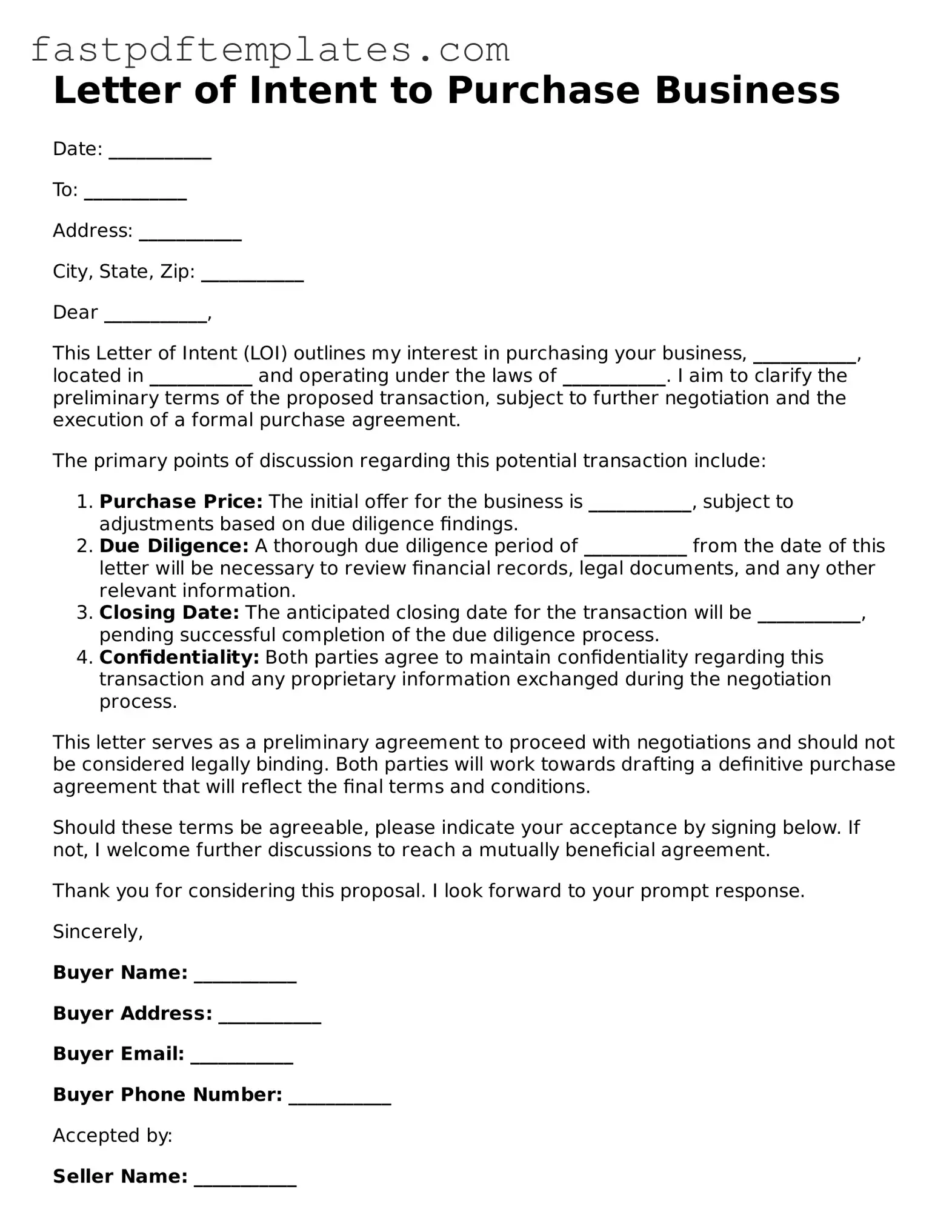Letter of Intent to Purchase Business
Date: ___________
To: ___________
Address: ___________
City, State, Zip: ___________
Dear ___________,
This Letter of Intent (LOI) outlines my interest in purchasing your business, ___________, located in ___________ and operating under the laws of ___________. I aim to clarify the preliminary terms of the proposed transaction, subject to further negotiation and the execution of a formal purchase agreement.
The primary points of discussion regarding this potential transaction include:
- Purchase Price: The initial offer for the business is ___________, subject to adjustments based on due diligence findings.
- Due Diligence: A thorough due diligence period of ___________ from the date of this letter will be necessary to review financial records, legal documents, and any other relevant information.
- Closing Date: The anticipated closing date for the transaction will be ___________, pending successful completion of the due diligence process.
- Confidentiality: Both parties agree to maintain confidentiality regarding this transaction and any proprietary information exchanged during the negotiation process.
This letter serves as a preliminary agreement to proceed with negotiations and should not be considered legally binding. Both parties will work towards drafting a definitive purchase agreement that will reflect the final terms and conditions.
Should these terms be agreeable, please indicate your acceptance by signing below. If not, I welcome further discussions to reach a mutually beneficial agreement.
Thank you for considering this proposal. I look forward to your prompt response.
Sincerely,
Buyer Name: ___________
Buyer Address: ___________
Buyer Email: ___________
Buyer Phone Number: ___________
Accepted by:
Seller Name: ___________
Seller Signature: ______________________ Date: ___________
